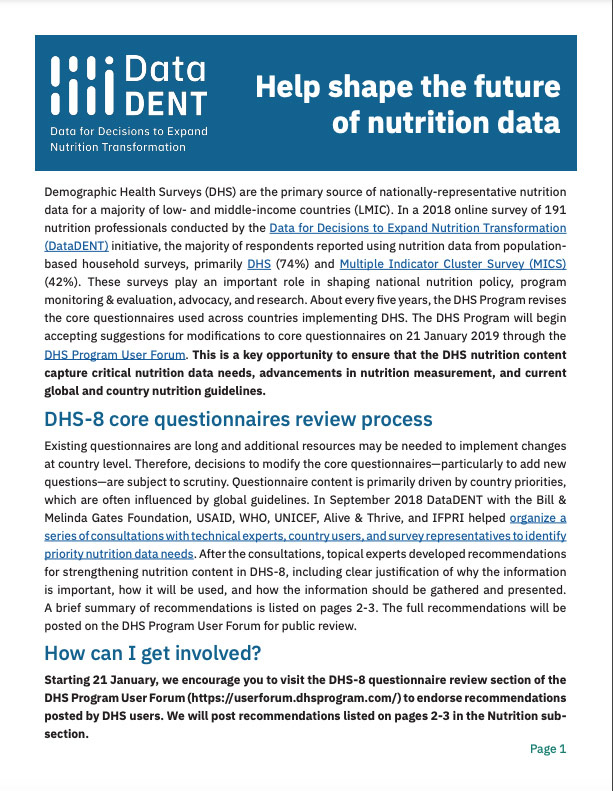Download:
Summary of Recommendations | PDF 73KB
Description of New Content in DHS-8 | PDF 84KB
Date of Publication | May 2019
Between September 2018 and March 2019, DataDENT worked with stakeholders to develop a set of nutrition recommendations for DHS. The “Summary of Recommendations” document describes the development process, which included consultations in September 2018 to discuss nutrition measurement gaps in population-based household and facility surveys.
Each of the recommendations outline endorsers, rationale and supporting literature, proposed question wording, validation studies, and use cases. Copies of recommendations submitted to DHS and discussion are publicly available on the DHS Program Forum.
1. Coverage of nutrition interventions during antenatal care (ANC) [link]
2. Support for breastfeeding at health facilities – linked to monitoring of Baby-friendly Hospital Initiative (BFHI) [link]
3. Marketing of breastmilk substitutes (BMS) [link]
4. Counseling about breastfeeding at early critical time points [link]
5. Infant and young child feeding (IYCF) counseling 6-23 months [link]
6. Assessment of child growth [link]
7. Updated indicators for IYCF [link]
8. Minimum Dietary Diversity for Women (MDD-W) and unhealthy diets [link]
9. Measuring household food insecurity [link]
10. Food Fortification: Household Coverage of Fortifiable Foods [link]
11. Iron-containing supplements for pregnant women and young children [link]
Before the forum closed, the 11 recommendations collectively received a total of 160 comments and endorsements on the forum.
In October 2019, the DHS Program released new DHS core questionnaires for round 8 (2018-2023). The updated questionnaires feature major updates to nutrition content and fill important gaps in the nutrition data value chain – a huge victory for nutrition measurement. The “Description of New Content in DHS-8” document summarizes the outcome of the 11 recommendations and nutrition content changes in the survey.

